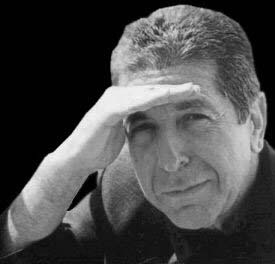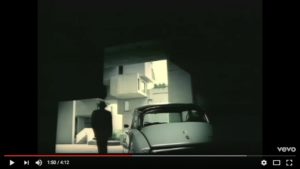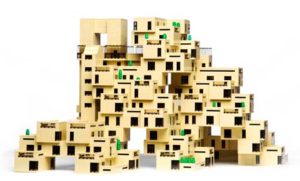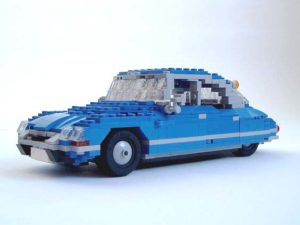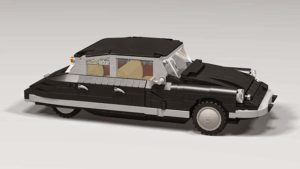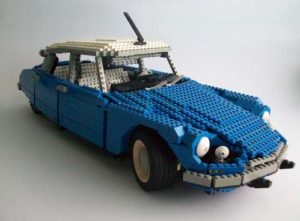We were most saddened to hear of Leonard Cohen’s passing last November. He was a unique singer, songwriter, musician, poet, novelist, and painter. And he was Canadian, growing up in Montreal and maintaining a home and family there until his death.
How pleasing it was that Citroënvie member Michael Halbert send in this link to a video of Leonard Cohen’s song In My Secret Life where a Citroën DS is featured. The highly stylized video for its time was filmed in Montreal at Habitat 67, architect Moshe Safdie’s experimental housing complex on the shore of the St. Lawrence river and part of the Expo 67 world’s fair. Built by filling in a sizeable portion of the river around Ile-Saint-Helen (St. Helens’ Island), Expo 67 consumed 25 million tons of rock and dirt excavated from underneath Montreal to build the Metro (subway) system, Ile-Saint-Helen was expanded and an entirely new one called Ile-Notre-Dame was made. All in under 10 months! Today, these twin islands form Parc Jean-Drapeau, home to the Canada Grand Prix at Circuit Gilles Villeneuve, the Olympic Basin, La Ronde Amusement Park and the Osheaga Music Festival.
Habitat ’67 has endured to become an architectural landmark in Montreal, and was declared a historic site by Quebec in 2009. It launched the career of Israeli-Canadian architect Moshe Safdie, who designed the cube-tastic complex as part of his thesis project for the architecture program at McGill University. Habitat ’67 was Safdie’s vision for the future of urban housing in an increasingly crowded world. The complex is made up of 354 identical pre-made cubes artistically and strategically stacked together to make 148 apartment units. Today, units sell for as much as 2 million dollars!
Both Habitat 67 and the DS act as a visual metaphors for Leonard Cohen’s mysterious subconscious in this likewise experimental music video. It is also filled with the routine domesticity of an egg-headed family depicting some kind of existential crisis. Yes, its rather obscure and we’re not really sure what to make of that. View the In My Secret Life video here:
If there was ever car that was suited for a role in this Leonard Cohen video it is the DS. Like most world expositions, Expo 67 represented a theme. Inspired by Terre des Hommes, the memoir of the famous French writer Antoine de Saint-Exupéry (Le Petit Prince), the organizers settled on the theme of Man and his World for Expo 67. The exposition painted mankind as a world-changing force, capable of constructing whatever it saw fit, and celebrated the achievement and potential of the human spirit. In reaction to a rapidly-changing world, the expo also served as a symposium to develop new ideas about architecture, social structure, and the human psyche. Immersed in this complexity and pondering our human existence was Leonard Cohen. What else would drive but something iconic and French?
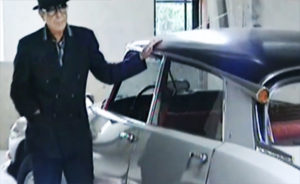 Photo of Cohen and the DS that appears to be taken during of the filming of the video for In My Secret Life.
Photo of Cohen and the DS that appears to be taken during of the filming of the video for In My Secret Life.
If Habitat 67 appears to the viewer like it was designed using Lego blocks, that’s because it was. Safdie built his original and subsequent models using them. In 2012, Habitat 67 received more than 89, 000 votes on a Lego architecture poll, beating the Eiffel Tower, Rome’s Coliseum, and other iconic buildings in a contest to see which existing structure Lego should develop next as a custom set. The Lego Group has not since developed a Habitat 67 set, nor has it committed to doing so. Still, this hasn’t stopped enterprising individuals from pursuing the idea themselves.
People have attempted to construct Citroën’s DS using Lego, unfortunately with less than fluid results.
While many people consider Habitat 67 to be a success in innovation and a concrete expression of the creative spirit of Expo 67, a number of critics are quick to point out that the project failed to meet its original goals. If we judge Habitat 67 by the guidelines outlined in Safdie’s vision, that of providing dense, affordable housing, it’s easy to see where it falls short. In the end, the project ended up costing more than 22 million dollars… in 1967 money!
In light of numerous critiques for Habitat’s high cost, it’s worth noting that Safdie never expected this structure to be cheap.
His original idea was a 1000-unit city complete with a school and a number of shops and services. He thought of Habitat 67 as a prototype, and estimated a 10% efficiency in its construction. Repetition, he believed, would streamline the production process and mechanize it, bringing down the cost and paving the way for his 3-D cities, similar in a way to what Citroën envisioned when they invested in building a revolutionary automotive design and launching the DS.
Update — Feb. 5, 2024: Moshe Safdie (along with Frank Gehry) is arguably Canada’s most famous and accomplished architect. In his words,
“After Habitat ’67 was completed, Nina and I found ourselves, for the first time, with an income beyond basic sustenance. I allowed myself one indulgence. Succumbing to a love for cars—which I trace back to my father’s Studebaker—I bought a 1968 Citroën DS21 convertible, a limited edition issued by the French designer Chapron, and one of the most beautiful cars ever made. I believe only a hundred or so were manufactured. I’ve kept the car to this day, maintained and restored over the years. I still drive it in the summer, though it now qualifies as an antique.“
(from “If Walls Could Speak: My Life in Architecture” by Moshe Safdie, 2022 )
